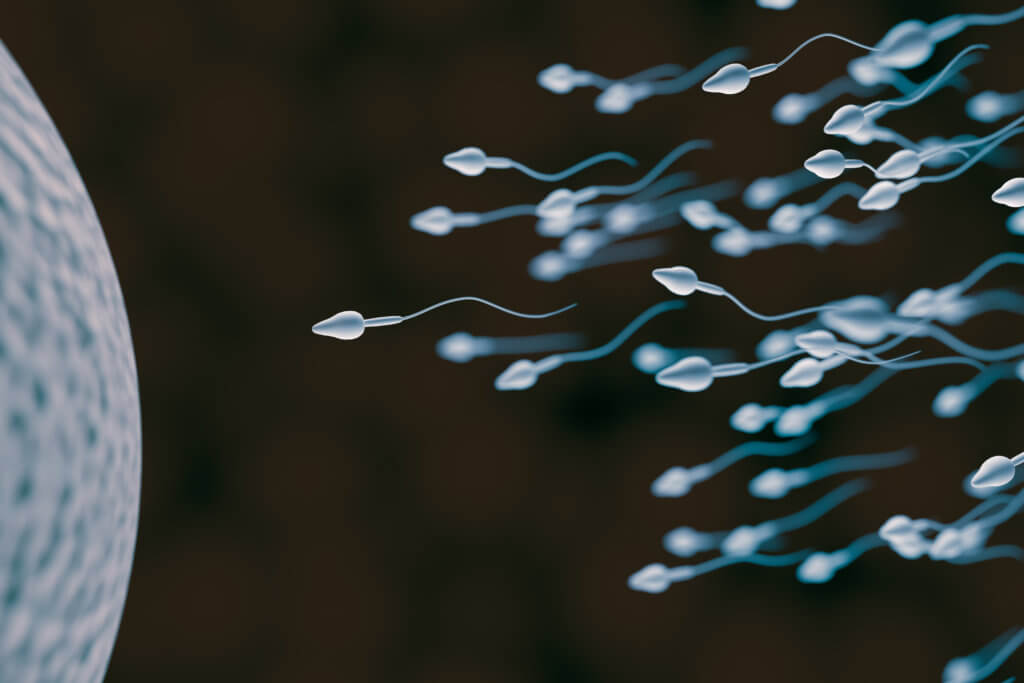
[ad_1]
Berlin, Germany – The biological race between sperm to reach an egg is a fierce and competitive process. Now German researchers say they’ve discovered which protein gives sperm the winning edge. Their study found that a molecular ‘switch’ in semen could also allow men to turn their fertility on and off.
Experiments in mice reveal that the “winner” carries a set of toxic mutations that poison rival sperm. Researchers claim that a genetic factor called “haplotype t” promotes the success of the sperm that carries it. They are also powered by a protein called RAC1, the molecular switch that propels sperm forward.
Could semen “change” or suppress fertility?
Sperm containing this protein move faster than their peers, giving an advantage to whoever reaches the egg first. The results should also apply to humans. This could lead to a pill that increases fertility in men, or a male oral contraceptive.

It would target this chemical, raising or lowering the levels. However, too much can cause male infertility. On average, a man produces between 80 and 300 million sperm each time he ejaculates. Despite this, over 60% of fertility problems are related to poor quality semen, so keeping them healthy is important.
“Sperm with haplotype t manage to deactivate sperm without it,” explains corresponding author Bernhard Herrmann of the Max Planck Institute for Molecular Genetics in an academic press release.
“The trick is that the t haplotype ‘poisons’ all the sperm, but at the same time produces an antidote, which only works in the t sperm and protects them. Imagine a marathon, in which all participants are given poisoned drinking water, but some runners also take an antidote.
Scientists find ‘antidote’ for poorly performing sperm
The study reveals that some of the genes carry mutations that distort regulatory signals, which are then distributed to all sperm. These are the “poisons” that disturb the progressive movement. The “antidote” kicks in after the set of chromosomes are distributed evenly among the sperm during maturation, with each cell containing only half of them.
Only those with the t haplotype produce an additional factor that reverses the negative effect. Optimal amounts of RAC1 improve the competitiveness of individual sperm, offering new hope in combating male infertility.
It is literally a race for life when millions of sperm swim to the eggs to fertilize them. Herrmann and his colleagues described the t haplotype as a “selfish” and natural segment of DNA. It breaks the standard rules of genetic inheritance and grants a success rate of up to 99% to sperm that contain it.
Analysis of individual sperm revealed that most had made little progress on their path and were genetically normal. On the other hand, the sperm in rectilinear motion contained the haplotype t. Basically, RAC1 has been identified as the key to motility differences. It transmits signals from outside the cell to the inside by activating other proteins. RAC1 also directs sperm to the egg, “sniffing” their way to the target.
“The competitiveness of individual sperm appears to depend on an optimal level of active RAC1; reduced or excessive RAC1 activity interferes with efficient forward movement, ”adds lead author Alexandra Amaral.
‘Ruthless Competitors’
When researchers treated the mixed sperm population with a substance that inhibits RAC1, genetically “normal” sperm could now swim gradually. The benefit of t-semen is gone. The results explain why mice with two copies of the t haplotype, one on each of the two chromosomes 17, are sterile.
They only produce sperm carrying the t haplotype. These cells have much higher levels of active RAC1 than the semen of genetically normal mice. However, sperm from normal mice treated with the RAC1 inhibitor also lost their ability to move gradually. In other words, insufficient RAC1 activity is also disadvantageous. Researchers believe that abnormal RAC1 activity could also be the underlying problem with forms of human infertility in men.
“Our data highlights the fact that sperm are ruthless competitors,” says Herrmann.
In addition, the example of the haplotype t shows how some genes use dirty tricks to transmit themselves.
“Genetic differences can give individual sperm an advantage in the race for life, thereby promoting the transmission of particular genetic variants to the next generation.”
The groundbreaking study appears in the journal PLoS Genetics.
SWNS writer Mark Waghorn contributed to this report.
[ad_2]
Source link